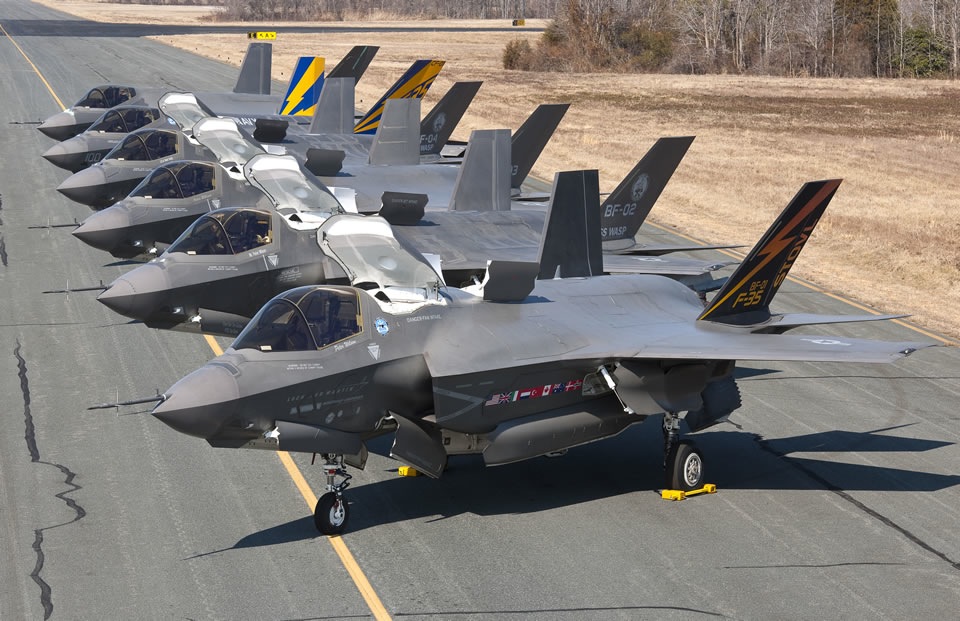GAO Says Weapons Costs ‘Lowest In Decade’; Portfolio Shrinks
Posted on
WASHINGTON: The overall cost for Pentagon’s weapons buying is at the lowest it’s been a decade, says the Government Accountability Office in its respected annual assessment of the military’s major programs.
But that overall result, which might seem to cheer exponents of acquisition reform and of smaller Pentagon budgets, contains two smaller points well worth noting. The F-35 program, the biggest in the Pentagon’s profile of 78 Major Defense Acquisition Programs (MDAP), increased in cost while the number of aircraft purchased declined. As the GAO report notes, this means the taxpayer “is paying more for the same amount of capability.”
Michael Sullivan, the head of defense acquisition at GAO, describes how big a slice of the Pentagon weapons budget the selected programs comprise in the letter to Congress that accompanies the report. “Despite the decrease in portfolio size, these 78 programs require approximately 30 percent of all development and procurement funding for all DOD acquisition programs over the next 5 years.”
More broadly, the number of MDAPs shrank by two, from 80. As defense consultant Loren Thompson tells me in an email, that “is fewer than the number of programs that Secretary of Defense Dick Cheney claimed to have killed during his four-year tenure at the end of the Cold War. He said he had killed a hundred major programs; now the Pentagon doesn’t have that many programs left to terminate.”
Thompson makes the intriguing point that the military is shrinking and “joint force investment in new technology is at its lowest ebb in a long time — which is why the cost of military modernization seems to have moderated. The Army’s modernization program, for instance, has been cut in half since the beginning of the Obama years. The Air Force‘s fleet of aircraft is the oldest in the service’s history. And the Navy is now down to 275 ships.”

The GAO draws this narrower conclusion straight from the data: “The decrease in current portfolio cost is due primarily to significant quantity decreases on two programs—most other programs actually experienced a cost increase over the past year. The average time to deliver initial capability to the warfighter also increased by over 1 month. Forty-one programs in the portfolio lost buying power during the past year resulting in $5.3 billion in additional costs, a contrast to the buying power gains seen in GAO’s prior assessments.”
The last sentence is sure to elicit some groans from Frank Kendall, the Pentagon’s top weapons buyer, and his team. They are about to roll out the third version of their vaunted Better Buying Power initiative and certainly would have hoped for an improvement in that buying power.
Buying Power Analysis for the 2014 Portfolio (Fiscal year 2015 dollars in billions)
|
Number of programs |
Actual procurement cost change |
Change attributable to quantity changes |
Change not attributable to quantity changes |
|
|---|---|---|---|---|
|
Programs that lost buying power |
41 |
$8.4 |
-$12.1 |
$20.5 |
|
Programs that gained buying power |
33 |
-$16.5 |
-$1.3 |
-$15.2 |
|
Programs with no change in buying power |
4 |
$0.0 |
$0.0 |
$0.0 |
|
Portfolio totals |
78 |
-$8.1 |
-$13.4 |
$5.3 |
Source: GAO analysis of DOD data. | GAO-15-342SP
Thompson argues that the numbers reflect what the defense industry has worried might happen; namely that a declining budget would mean procurement cuts to feed personnel and operations and maintenance.
“The Obama Administration is doing exactly what previous Democratic administrations did, generating most of its defense savings by cutting weapons programs,” he said. “No wonder senior policymakers now worry our enemies are closing the gap in military technology.”
Defense Secretary Ash Carter and Kendall have pressed for several years to protect research and development funds, as well as those of crucial new weapons such as the F-35, the Ohio Replacement submarine, the KC-46 tanker, the next-generation aircraft carriers and an array of space programs. Part of that effort to protect our so-called “seed corn” took form in the recent creation of the so-called Third Offset Strategy.
Subscribe to our newsletter
Promotions, new products and sales. Directly to your inbox.

